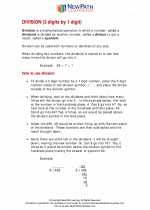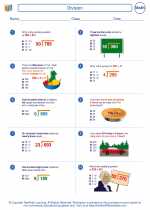Fractals
Fractals are complex geometric shapes that can be split into parts, each of which is a reduced-scale copy of the whole. This self-similarity is a key characteristic of fractals. They are often created by repeating a simple process over and over in an ongoing feedback loop.
Key Concepts
- Self-Similarity: Fractals exhibit self-similarity, meaning that at any level of magnification, the shape looks similar to the whole structure. This property allows for infinite complexity within a finite boundary.
- Fractal Dimension: Unlike regular geometric shapes, fractals have a fractional or non-integer dimension. This dimension measures the space-filling capacity of the fractal, indicating how the detail in the pattern increases with magnification.
- Iterated Function Systems (IFS): Fractals can be generated through IFS, which involves repeatedly applying a set of affine transformations to a set of points, creating the self-similar structure.
- Types of Fractals: Fractals can be classified into various types, such as deterministic fractals (like the Mandelbrot set), random fractals (like the diffusion-limited aggregation), and more.
Study Guide
To better understand fractals, consider the following steps in your study:
- Start with the basics of geometric shapes and their properties, such as regular polygons, circles, and rectangles.
- Explore the concept of self-similarity and how it applies to fractals. You can use visual examples of fractals like the Sierpinski triangle or the Koch snowflake to illustrate this concept.
- Learn about the fractal dimension and how it differs from the Euclidean dimension of traditional shapes. Understand how the dimension is calculated and what it signifies.
- Study the concept of IFS and how it is used to generate fractals. Experiment with simple transformations like scaling, translation, and rotation to create self-similar patterns.
- Explore different types of fractals and their unique properties. Look into famous examples like the Mandelbrot set and the Julia set to understand the diversity of fractal structures.
- Experiment with fractal-generating software or coding to create your own fractal patterns. This hands-on approach can deepen your understanding of fractal geometry and its applications.
By mastering these concepts and engaging in practical exploration, you can develop a solid understanding of fractals and their fascinating properties.
.◂Math Worksheets and Study Guides Sixth Grade. Division
Study Guide Division
Division  Worksheet/Answer key
Worksheet/Answer key Division
Division  Worksheet/Answer key
Worksheet/Answer key Division
Division  Worksheet/Answer key
Worksheet/Answer key Division
Division 

 Worksheet/Answer key
Worksheet/Answer key
 Worksheet/Answer key
Worksheet/Answer key
 Worksheet/Answer key
Worksheet/Answer key

The resources above cover the following skills:
Connections to the Grade 6 Focal Points (NCTM)
Number and Operations: Students' work in dividing fractions shows them that they can express the result of dividing two whole numbers as a fraction (viewed as parts of a whole). Students then extend their work in grade 5 with division of whole numbers to give mixed number and decimal solutions to division problems with whole numbers. They recognize that ratio tables not only derive from rows in the multiplication table but also connect with equivalent fractions. Students distinguish multiplicative comparisons from additive comparisons.